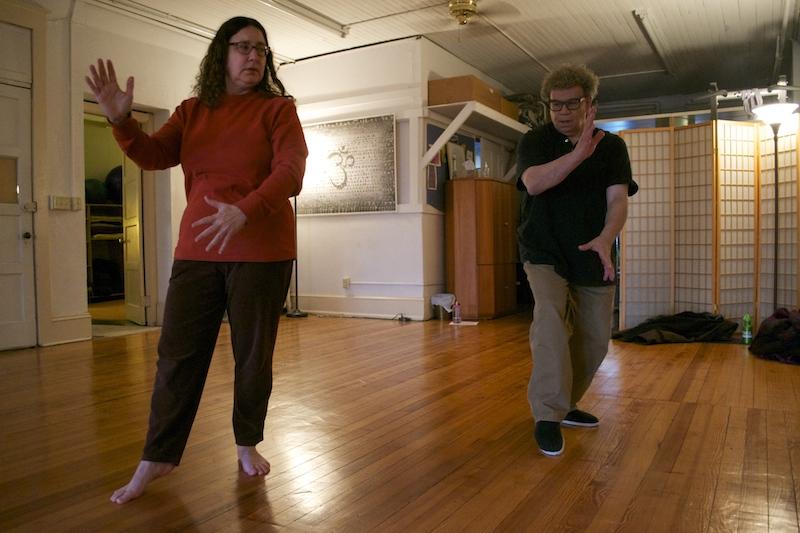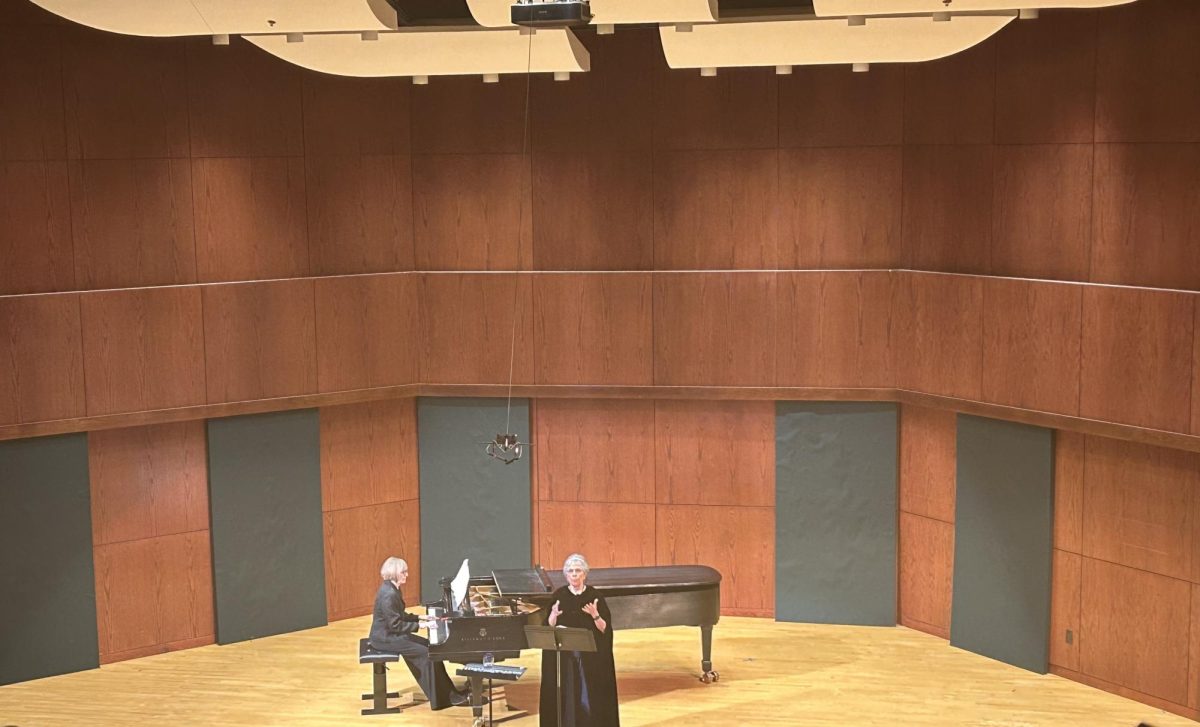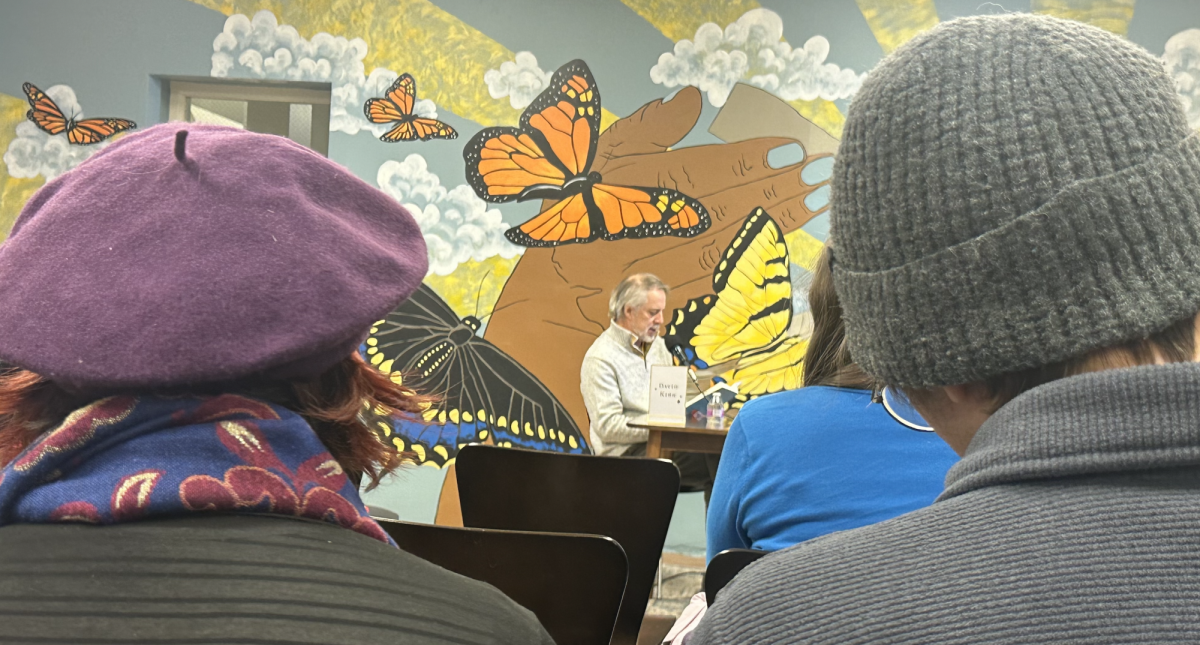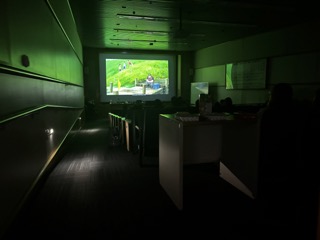Anthony Fazio stands in the front of a dimly lit studio. He moves his arms and hands slowly as if engaged in a slow paced dance. Fazio teaches a Tai Ji Quan (also known as Tai Chi) class every Tuesday at 7:30 p.m. at Sunrise Yoga Center, located in the Ithaca commons. The classes primarily focus on health aspects but also include occasional exploration of the philosophical and martial characteristics.
Fazio has studied martial arts for more than 25 years, including Aikido, Iaido, Classical Yang style Tai Ji Quan and both Daoist and Buddhist Qi Gong. He is nationally certified and licensed to practice acupuncture and Chinese medicine.
Fazio said many people don’t know the basis of Tai Ji Quan or what the expressions in the practice represent.
“The real obvious thing that nobody ever notices is people don’t realize that there’s a philosophical basis to Tai Ji Quan and a lot of the expressions that we do are representations of Daoism, cosmological features, concepts, whatever,” Fazio said.
Daoist concepts are found in Tai Ji Quan which become visually integrated into the practice. Wu Ji, one of the concepts, represents the state of nothingness and boundlessness. Wu Ji can be visually represented by standing still.
Fazio said the Tai Ji in his classes are all a prescribed form, but he sometimes takes specific parts out and uses them to perform different exercises.
“We might just catch the ball and part the mane and just keep doing that up and down, just to work on footwork, just to work on moving your waist,” he said. “Everything has to stay very much erect, you have to be posture conscious.”
Fazio said the hand movements embody the separation of a ball of ji, the curving motions representing yin and yang.
“We’re trying to do a visual representation, that separation of yin and yang,” he said. “But they’re not separate, they’re part of the same entity, they’re just somewhat opposite but they define each other and you can’t define night without day, so that’s part of it.”
Fazio compared the movements involved in Tai Ji to riding a bicycle.
“It’s like riding a bicycle, once you learn it’s kind of second nature, it’s muscle memory you’re not thinking about it,” he said.
Fazio said he appreciates the constant exploration, ancient philosophy and health aspects of Tai Ji. He said that after years of practice, he is still discovering thought-provoking parts.
“I’ve been doing this same form for 25, 26 years and I’m still exploring, it’s still interesting and it’s fun to impart it and pass it on,” he said.
Stacy Pendell participated in Fazio’s Tai Ji class on April 5. She had been trying out other exercise classes and became curious after seeing his class in the newspaper.
“I wanted to start doing some exercise classes and tried several of them,” she said. “I tried to do a little bit of yoga, a little bit of zumba.”
Pendell said she chose Tai Ji because of the way the practice is centering in terms of balance.
“You root yourself and sink in, it’s really centering,” she said. “The mind flow meditation thing I guess is the popular thing, but it’s a form of that. You’re finding your own balance.”
Pendell said movements can be done at a participant’s own pace, and described Tai Ji as being a practice that isn’t quite yoga or zumba, but somewhere in the middle.
Chris Dunham, a regular in the class, who has been doing martial arts for 40 years, discusses yoga as a meditative practice. He distinguishes yoga and Tai Ji.
“If I’m doing yoga and I’m doing something I can still think about my workday even when I’m not supposed to… But if i’m doing this and it’s a moving meditation and i’m just in it and i’m just moving, i’m totally checked out. So I get to go on vacation for an hour in the middle of the week,” he said.







